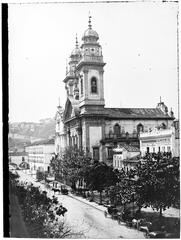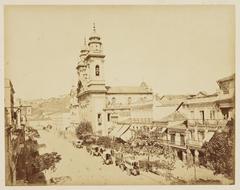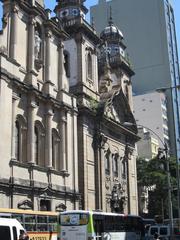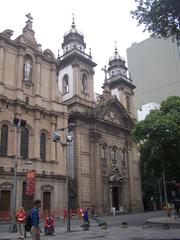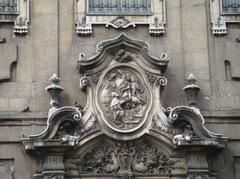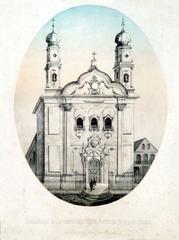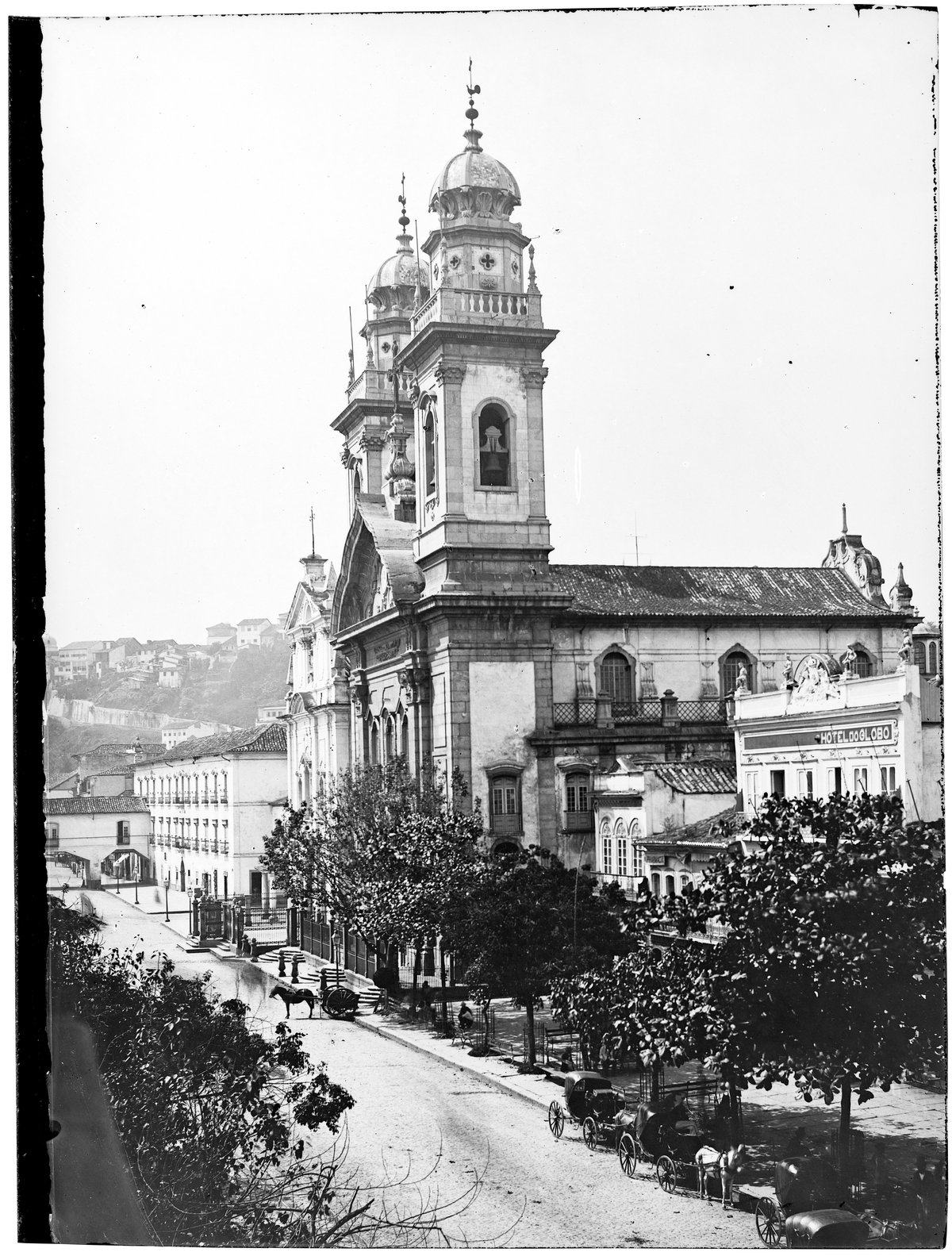
Visiting the Church of the Order Terceira do Carmo in Rio de Janeiro: Hours, Tickets, and Visitor Tips
Date: 14/06/2025
Introduction
Nestled in the historic heart of Rio de Janeiro, the Igreja da Ordem Terceira do Carmo (Church of the Order Terceira do Carmo) is a magnificent testament to Brazil’s colonial religious heritage, artistic excellence, and civic significance. Founded by the lay Carmelite brotherhood in 1648, this iconic church invites visitors to journey through centuries of faith, architectural splendor, and cultural vitality. Its unique stone-clad Baroque and Rococo façade, richly gilded interiors, and exquisite Portuguese azulejo tiles reflect a harmonious blend of Brazilian colonial artistry and Portuguese Pombaline influences. The church not only played a central role in royal and imperial ceremonies during Brazil’s monarchical era but continues to serve as a vibrant religious and cultural hub today.
This comprehensive guide offers essential information for travelers, history enthusiasts, and architecture lovers, covering visiting hours, ticketing policies, tips for accessibility, nearby attractions, and practical advice for an enriching experience. For further insights and updates, consult official resources such as the Museum of the Third Order of Carmel website, IPHAN, and cultural heritage portals. Enhance your visit with tools like the Audiala mobile app.
Experience the spiritual ambiance, architectural beauty, and historical depth of this Rio de Janeiro treasure, where faith, art, and history converge (Templos Históricos; Rio Curioso).
Historical and Cultural Overview
Origins and Foundation
The Igreja da Ordem Terceira do Carmo traces its roots to 1648, when lay devotees founded the Third Order of Carmelites in Rio de Janeiro (Templos Históricos). Initially, the brotherhood worshipped in a modest chapel behind the Carmelite Convent. As membership grew, the need for a larger space led to the construction of the current church, with the foundation stone laid in 1755 (Cronicas Macaenses). The church was inaugurated in 1770, though construction continued into the 19th century.
Architectural Significance
The church’s façade is a rare example of colonial architecture entirely clad in stone, echoing Lisbon’s Pombaline style. The portals, imported from Portugal and carved from lioz limestone, are especially notable for their artistry. Inside, the nave is adorned with Rococo woodwork—gilded and intricately carved—by artisans such as Luís da Fonseca Rosa and Mestre Valentim, whose Chapel of the Novitiate is considered a masterpiece of Brazilian colonial art. The azulejo tile panels, imported from Portugal, line the lower walls and depict biblical and Carmelite themes (Guiaculturalcentrodorio).
Religious and Civic Role
Beyond its architectural grandeur, the church has played a central role in Rio’s religious and civic life. Its proximity to the Paço Imperial and the Antiga Sé made it a focal point for royal ceremonies, including the coronation of King João VI and the consecrations of Emperors Pedro I and II (Imaginário de Janeiro). The church remains an active center for Carmelite worship, hosting Masses, confessions, and major religious festivals, such as the Feast of Our Lady of Mount Carmel on July 16.
Artistic Heritage
The church’s interior is a showcase of colonial Brazilian art, featuring gilded altarpieces, painted ceilings, and a collection of sculptures and paintings depicting Carmelite saints and biblical scenes. The azulejo panels and sacred objects highlight the church’s role as both a place of worship and a museum of religious art (Museu Nacional de Belas Artes; Enciclopédia Itaú Cultural).
Preservation and Recognition
Recognized as a national heritage site by IPHAN, the church has benefited from extensive restoration efforts, ensuring the preservation of its artistic and architectural treasures for future generations (IPatrimônio). Ongoing conservation is supported by public and private initiatives.
Visitor Information
Location and Accessibility
The church is located at R. Primeiro de Março, S/N – Centro, Rio de Janeiro, in the city’s historic downtown district (Google Maps). It is within walking distance of other major colonial landmarks, and easily accessible by metro (Carioca and Uruguaiana stations), bus, or taxi. Due to the busy Centro district, public transport is recommended.
The historic structure poses some accessibility challenges, but ramps and handrails have been installed in certain areas. Visitors with mobility concerns should contact the church in advance for assistance (Ordem Terceira do Carmo).
Visiting Hours and Services
- Visiting Hours: Tuesday to Sunday, 9:00 AM to 5:00 PM. Closed on Mondays and select holidays.
- Mass Times: Sundays at 9:00, 10:30, and 11:30 AM; weekdays at 10:00 and 11:30 AM (Ordem Terceira do Carmo).
- Confessions: Available before Mass.
- Special Events: Major festivals and novenas may affect visiting hours; check the official website for updates.
Tickets and Admission
- Entry: Free of charge. Donations are encouraged for maintenance and restoration (Ordem Terceira do Carmo).
- Dress Code: Modest attire is required; shoulders and knees should be covered. Silence and reverence are expected during services.
Guided Tours
- Availability: Guided tours (primarily in Portuguese) can be arranged by prior booking or during festivals. English-speaking guides may be hired independently (Inventário ARQ Rio).
- Virtual Resources: High-quality images, virtual tours, and educational materials are available via cultural heritage websites and the Museum of the Third Order of Carmel website.
Highlights and Tips for Visitors
Must-See Features
- Façade and Portals: Admire the rare stone façade and the intricately carved lioz limestone portals.
- Gilded Interiors: Marvel at the Rococo woodwork, especially the main altar and Chapel of the Novitiate.
- Azulejo Tiles: Observe the Portuguese ceramic panels that line the walls, illustrating Carmelite and biblical stories (Museu Nacional do Azulejo).
- Artworks: Look for paintings and sculptures of Carmelite saints and scenes from Marian devotion.
Practical Advice
- Photography: Permitted, but avoid flash and be respectful during services.
- Timing: Early morning or late afternoon visits offer quieter experiences and optimal lighting.
- Nearby Attractions: Combine your visit with the Paço Imperial, Antiga Sé, Church of Our Lady of Candelaria, and São Bento Monastery (IBN Battuta Travel).
- Language: Most signage and services are in Portuguese; consider using a translation app or arranging a bilingual guide.
Safety and Etiquette
- Security: The Centro area is busy; keep valuables secure and stay aware of your surroundings.
- Behavior: Maintain silence and respectful conduct, especially during religious ceremonies.
Special Events and Community Life
The Igreja da Ordem Terceira do Carmo is a focal point for Carmelite celebrations and community gatherings. The Feast of Our Lady of Mount Carmel in July draws large crowds, with processions, special Masses, and cultural activities (Ordem Terceira do Carmo). The church also supports charitable work through its historical hospital and serves as a venue for concerts and educational programs.
Frequently Asked Questions (FAQ)
Q: What are the visiting hours?
A: Tuesday to Sunday, 9:00 AM to 5:00 PM; closed Mondays.
Q: Is there an entrance fee?
A: No, but donations are welcomed.
Q: Are guided tours available?
A: Yes, primarily in Portuguese; advance booking recommended.
Q: Is the church wheelchair accessible?
A: Some areas have ramps; contact the church for details.
Q: Can I take photographs?
A: Yes, but avoid flash and respect restrictions during services.
Q: How do I reach the church by public transport?
A: Carioca and Uruguaiana metro stations are nearby; various bus lines serve the area.
Conclusion
The Igreja da Ordem Terceira do Carmo is a gem among Rio de Janeiro’s historical sites—a living monument to colonial artistry, Carmelite spirituality, and Brazil’s royal heritage. Its beautifully preserved interiors, rich artistic treasures, and ongoing role in community and religious life make it an essential stop for any visitor to Rio de Janeiro. Plan your visit to experience the harmonious blend of history, art, and spirituality at the heart of Brazil’s cultural identity.
For the latest updates, guided tour information, and event schedules, visit the church’s official website and follow related cultural platforms. Enhance your exploration with the Audiala app and explore more on Rio’s unique historical and religious attractions.
Sources and Further Reading
- Templos Históricos
- Rio Curioso
- Cronicas Macaenses
- Guiaculturalcentrodorio
- Instituto do Patrimônio Histórico e Artístico Nacional (IPHAN)
- Museu Nacional de Belas Artes
- Enciclopédia Itaú Cultural
- Museu Nacional do Azulejo
- Sanctuaria.art
- Imaginário de Janeiro
- Ordem Terceira do Carmo Official Website
- Inventário ARQ Rio
- IBN Battuta Travel
- Museum of the Third Order of Carmel website
